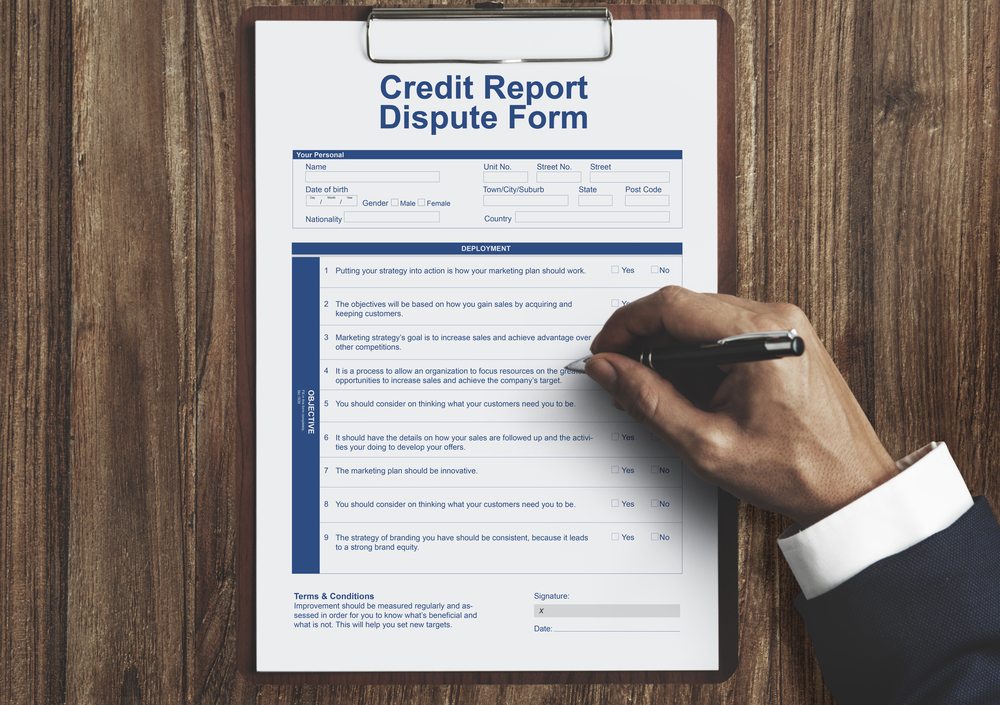You’ve spent the last two years saving for your dream car and finally have enough cash in the bank for a down-payment. All that’s left to do is complete the loan paperwork, grab the keys and drive off the lot.
Unfortunately, the application is denied because your credit score is too low. You pull your credit report and quickly notice several delinquent accounts you had no prior knowledge of and a really old medical bill that’s made its way to collections.
After filing a series of formal disputes and spending the next 30 days patiently awaiting a response, you’re even more disappointed to learn that the credit reporting agency didn’t exactly rule in your favor. The fraudulent accounts were removed, but the medical bill is still there and it’s sinking your credit score.
Looks like your dreams of owning that fancy car won’t become a reality anytime soon.
If you’re in a similar situation, I feel your pain and know firsthand that fighting the credit report dispute battle can be a time-consuming nightmare. But rest assured that all hope isn’t lost.
Here are some reasons why the credit bureau rejected your dispute and how to move forward:
Common Reasons Why Disputes Are Rejected
1. Insufficient evidence
The credit reporting agency must submit any relevant documentation to the information provider, or the entity that reported the account data. If the documentation fails to substantiate your claims, your dispute will be rejected and the negative accounts and/or information will remain on your credit report.
2. Oversight on the consumer’s behalf
According to the Federal Trade Commission (FTC), accurate and timely negative information cannot legally be deleted from your credit profile. In other words, an oversight on your behalf is not a reason for negative information to vanish into thin air. And that’s exactly why the old medical bill we discussed earlier was not removed following the formal dispute.
3. Supporting documentation never received by the creditor for review
Credit reporting agencies receive tons of disputes, so documentation could slip through the cracks. In fact, I recently disputed incorrect account information on my report and the credit bureau promptly responded with a rejection. When I reached out to the creditor, they informed me that they hadn’t received any formal dispute documentation from the credit bureau. The credit reporting agency also communicated that they had no knowledge of my request, although they sent me a formal rejection notice. Long story short, I had to start from scratch to resolve the issue.
4. Dispute deemed frivolous by the credit reporting agency
If the credit bureau you choose to file a dispute with categorizes your dispute as frivolous, they are not obligated to forward your documentation to the information provider(s) for further investigation. So, what exactly causes a dispute to be deemed frivolous? The most common red flags are:
- A large volume of disputes in a short period of time. Credit repair companies sometimes submit a large volume of disputes at once in an effort to overwhelm the credit bureaus. If the credit bureau suspects you’re doing the same, don’t be surprised if your dispute is thrown out.
- Repeat requests for disputes for items that have already been verified.
The Next Steps
Once you’ve finally pulled yourself together and come to terms with the rejection letter, it’s time to return to the drawing board and figure out your next course of action. Look, I know this seems so unfair. All you want to do is make things right so you can drive off the lot in your dream car, get approved for a credit card or move into the home of your dreams.
Why can’t you just pick up the phone and resolve the issue by speaking to a human. That’s a start, but there are some other actions you should consider taking:
Contact the creditor(s) directly
Reach out to the information provider to plead your case. They will be able to provide the current status of the account and any additional details you may want to know. Also, tell them you filed a formal dispute and ask your request was rejected. Maybe they didn’t have enough information or never received the dispute documents? Either way, now’s your chance to make it right by re-submitting the documents they need.
It’s also not a bad idea to contact the credit reporting agency for more information if your attempts at reaching the creditor is unsuccessful.
Request a statement of dispute be added to the credit file.
You can also request that a copy of the 100-word statement detailing your side of the story be included in your credit file and distributed to recent recipients of your credit report. Expect to pay a nominal fee for this service.
Improve your credit profile
Take control of your future credit health by:
- Making timely payments and getting current on all your delinquent accounts. (If money’s tight, reach out to your creditors to inquire about payment arrangements).
- Accelerating your debt repayment efforts and minimizing expenses to stay out of debt.
- Maintaining a healthy balance of installment and revolving accounts.
- Only applying for new credit as needed.
- Also, enroll in a free credit monitoring service to keep tabs on your credit profile.
Understand reporting timelines
Monitor your credit report to ensure negative items are no longer reflected once the reporting period lapses. The reporting guidelines are as follows:
- Late payments, collection accounts and public records (7 years)
- Bankruptcies (10 years)
- Unpaid tax liens (indefinitely)
Credit counseling
As a last resort, you can solicit the assistance of a non-profit credit counseling agency. Look for companies that offer practical, legal solutions to help rebuild your credit and establish a solid financial plan to solve money woes for a minimal fee. Also, check their ratings with the Better Business Bureau and scour the web for consumer reviews.
Ever had a dispute rejected? What steps did you take to move forward?




